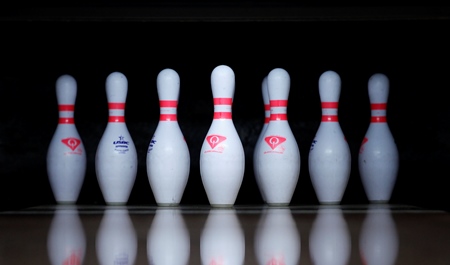How Bowling Pins are Made
How Bowling Pins are Made
In order to bowl, bowling pins sure do help. Otherwise, rolling a ball down the lane can get pretty quiet. Pins often are an afterthought when you lace up for league, but what causes them to have that undeniable sound when you throw 10 pins back in the pit? How much do they weigh? How do they pass approval? We'll start with a visual demonstration of the manufacturing process thanks to Discovery Canada's How It's Made:
In recent years, synthetic pins also have arrived on the market, and, currently, two are approved for USBC competition.
Bowling pins come in between 3 pounds, 6 ounces and 3 pounds, 10 ounces, and to become certified, they go through a rigorous process that includes the testing of the weight, height, center of gravity, radius of gyration and much, much more. In all, a total of 95 measurements are taken on every pin submitted for approval.
If the pin passes these tests, the manufacturer must submit more pins to make sure they can pass a basic scoring test, and then it is on to field testing in an actual bowling center for another scoring test as well as a durability test. If the pin passes the field test, it becomes approved for the following bowling season.
For a better demonstration of what it takes to get a pin approved, check out this informative video with USBC Research Technician Dave Nestor:
After taking in all of that information, we hope you have a new appreciation for those pesky pins that never seem to fall enough!






